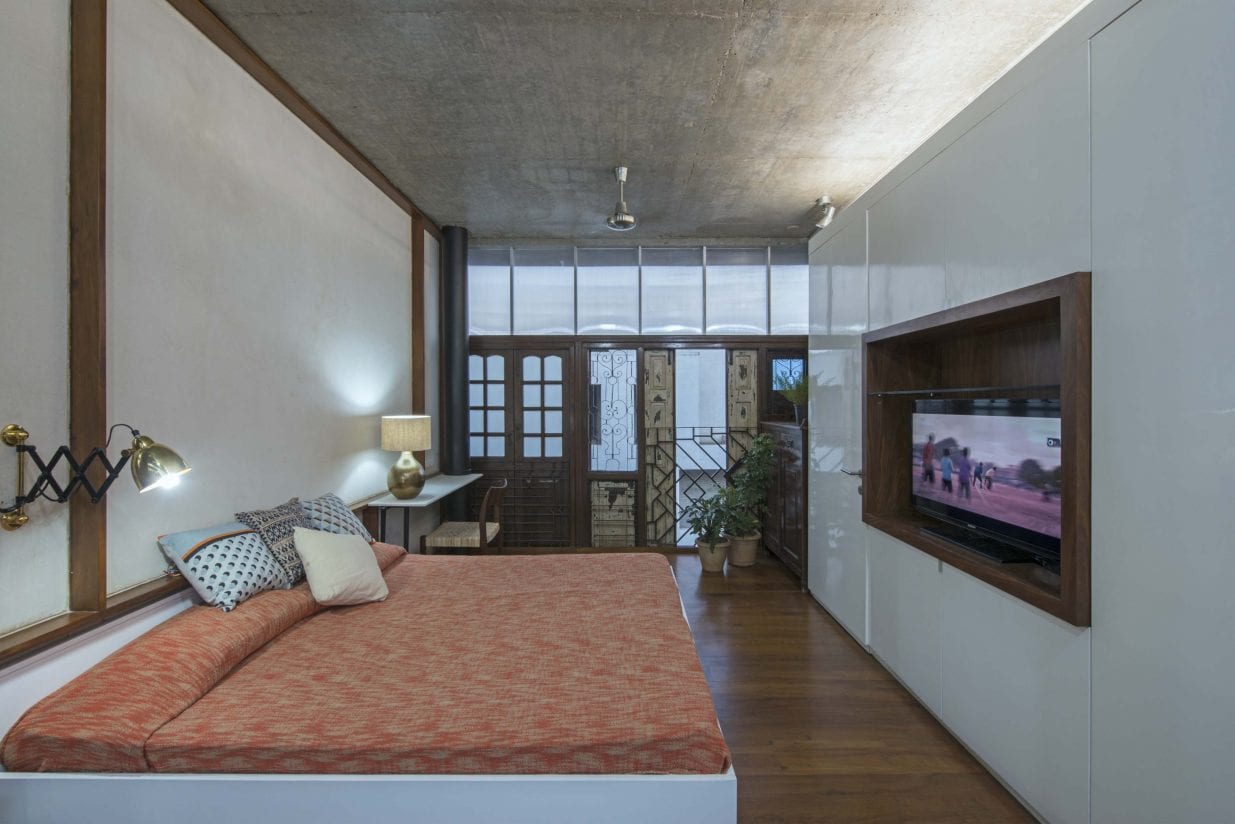The Collage House
The Collage House by S+PS architects looks at the idea of recycling and collage from the very physical – like materials, energy, to the intangible – like history, space and memories. By Aarti Mohan 
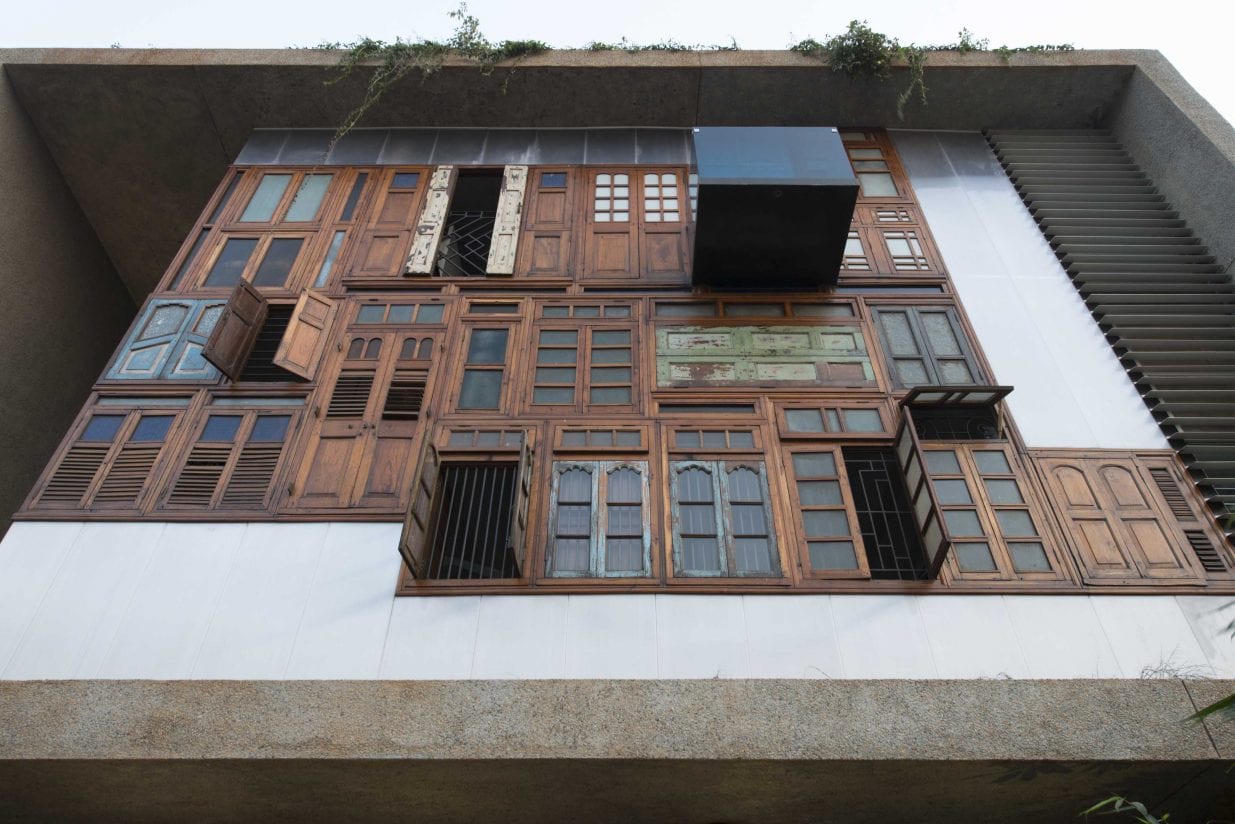
Living in Mumbai, India, it is impossible to ignore the informal settlements in the city, and if looked at closely there are many lessons to be learnt in frugality, adaptability, multi-tasking, resourcefulness, and ingenuity. A visual language emerges that is of the found object, ad-hoc, eclectic, patched and collaged. S+PS architects have attempted to apply some of these lessons without romanticizing or fetishizing them with this project located in Parsik Hill, Belapur, Navi Mumbai.
The front façade sets the tone for what lies within, with a “corner of windows” that recycles old windows and doors of demolished houses in the city. This becomes a major backdrop for the living room with an exposed concrete faceted ceiling above countered with polished white marble with intricate brass inlay on the floor. Metal pipe leftovers pieced together like bamboo form a “pipe wall” integrating structural columns, rainwater downtake pipes and a sculpture of spouts that in the monsoon are a delight for all the senses. In the central courtyard on one side scrap rusted metal plates are riveted together, kitsch colored tile samples retain a planter in the middle and on the third side is a wall clad in cut-waste stone slivers lifted off the back of stone cutting yards and waste generated on-site. 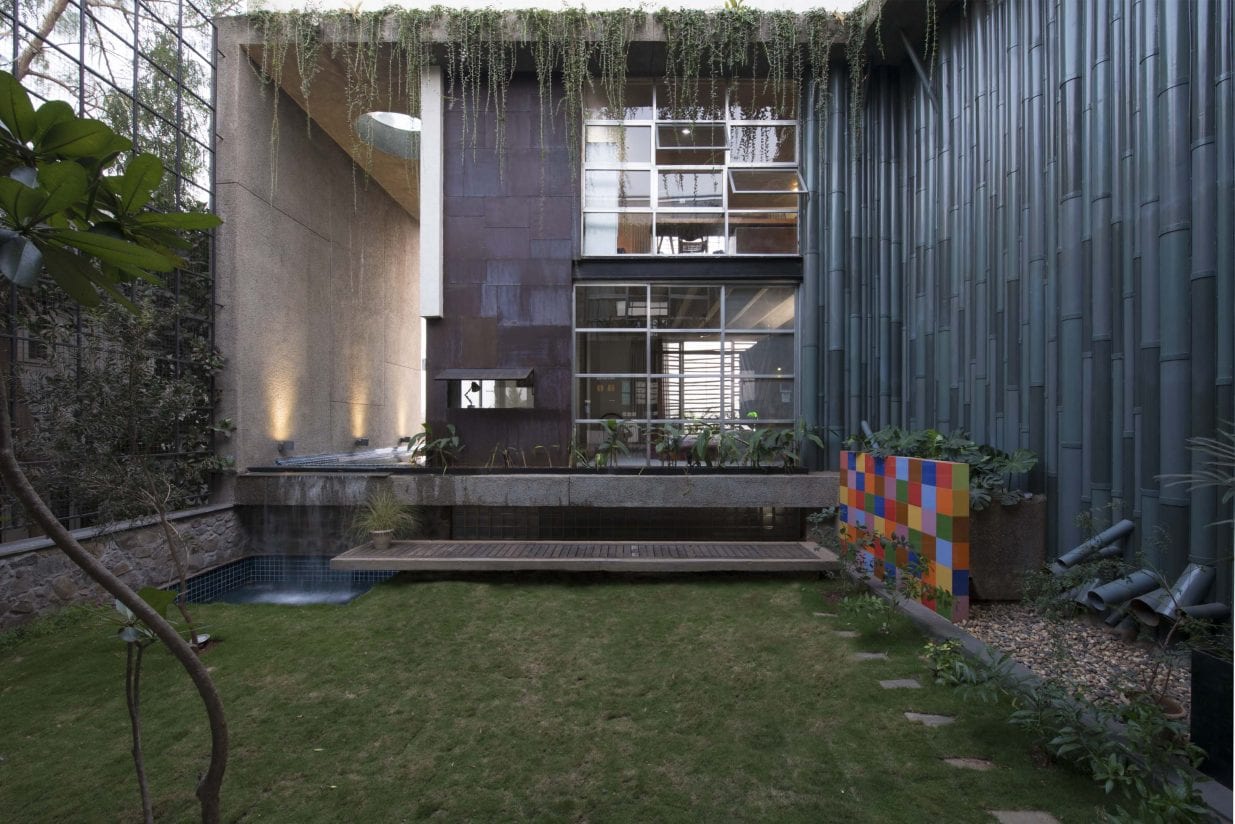

Hundred-year-old columns from a dismantled house bring back memories and nostalgia is nourished with a lightweight, steel and glass pavilion (with solar panels above) on the terrace level overlooking fabulous views down the hillside. This approach is reinforced again in the interior materials and elements. It plays up this contrast between the old and the new, the traditional and the contemporary, the rough and the finished. One finds the use of recycled materials like old textile blocks, flooring out of old Burma teak rafters and purlins, colonial furniture, fabric waste along with new ways of using traditional elements and materials like carved wooden mouldings, beveled mirrors, heritage cement tiles, etc.
“A language emerges which is both new but strangely familiar and that makes us rethink notions of beauty that we take for granted around us. To make this mélange more acceptable, it is encased in a “garb of modernity” (Nehru). This concrete frame – in a rough aggregate finish outside and in a smooth form finish inside – wraps and connects all the spaces from back to front and across all three levels,” shares this inspired collective.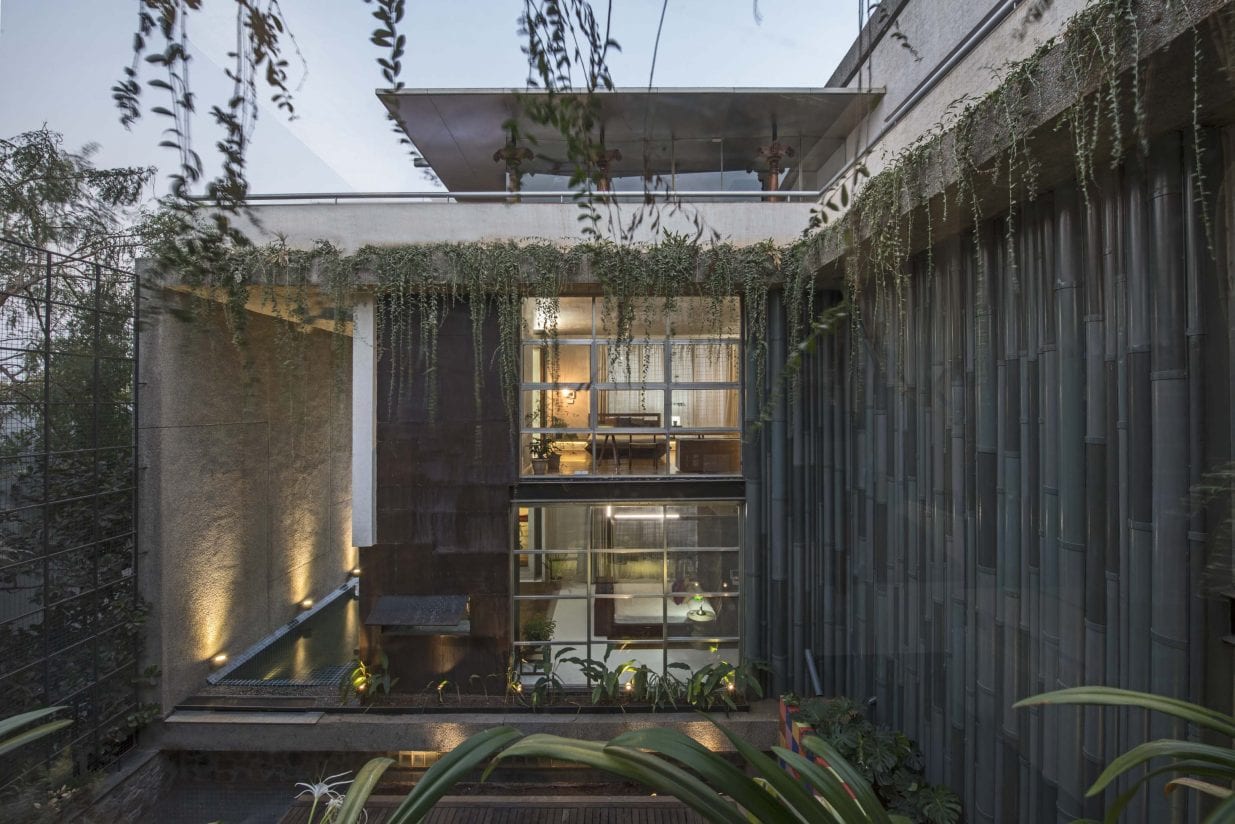
To build on top of a hill is always exciting until this group of architects discovered that they were surrounded by neighbours on all sides. This led to the idea of looking inwards and building around the quintessential Indian courtyard with the albeit slightly modified. “The court is a raised floor above the ground level and hidden below is a large rainwater harvesting tank wrapped with rock that was removed from the hillside during excavation. It is the core around which this large four-generation family is organized and comes together”, says the passionate bunch.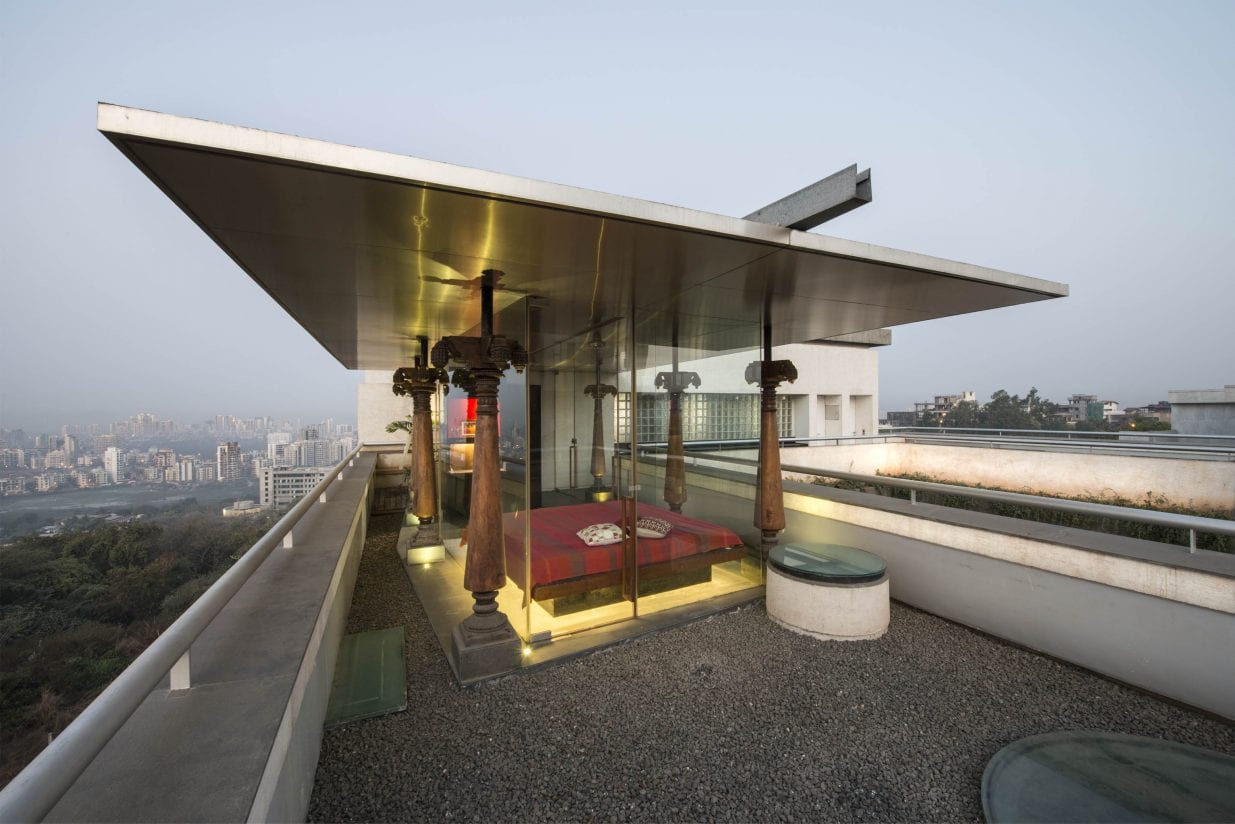
S+PS architects headed by Shilpa Gore-Shah and Pinkish Shah, have carried out projects in myriad fields including interior design, architecture, urban design, conservation and planning. Each project by the studio is approached by its context; where the constraints and complexities of the project optimize its aesthetics, and their solution addresses the program and not personal signatures. 

PROJECT: COLLAGE HOUSE
LOCATION: Parsik Hill, Belapur, Navi Mumbai
CLIENT: Mr. Bhargava
ARCHITECT: S+PS Architects
DESIGN TEAM: Pinkish Shah, Shilpa Gore-Shah, Mayank Patel,
Gaurav Agarwal, Shrutika Nirgun, Divya Malu, Manali Patel, Ved Panchwagh, Priyadarshi Srivastava, Rhea Lopes, Divya Jain
SITE AREA: 350 Square Meters 3775 Square Feet
PROJECT AREA: 520 Square Meters 5600 Square Feet
LIASION ARCHITECTS: Sopan Prabhu Architects
STRUCTURAL ENGINEERS: Rajeev Shah & Associates
MEP CONSULTANTS: Arkk Consultants
SITE SUPERVISION: Amish Mistry Architect
INITIATION OF PROJECT: 2006
COMPLETION OF PROJECT: 2015
PHOTOGRAPHERS: Sebastian Zachariah, Ira Gosalia, Photographix
